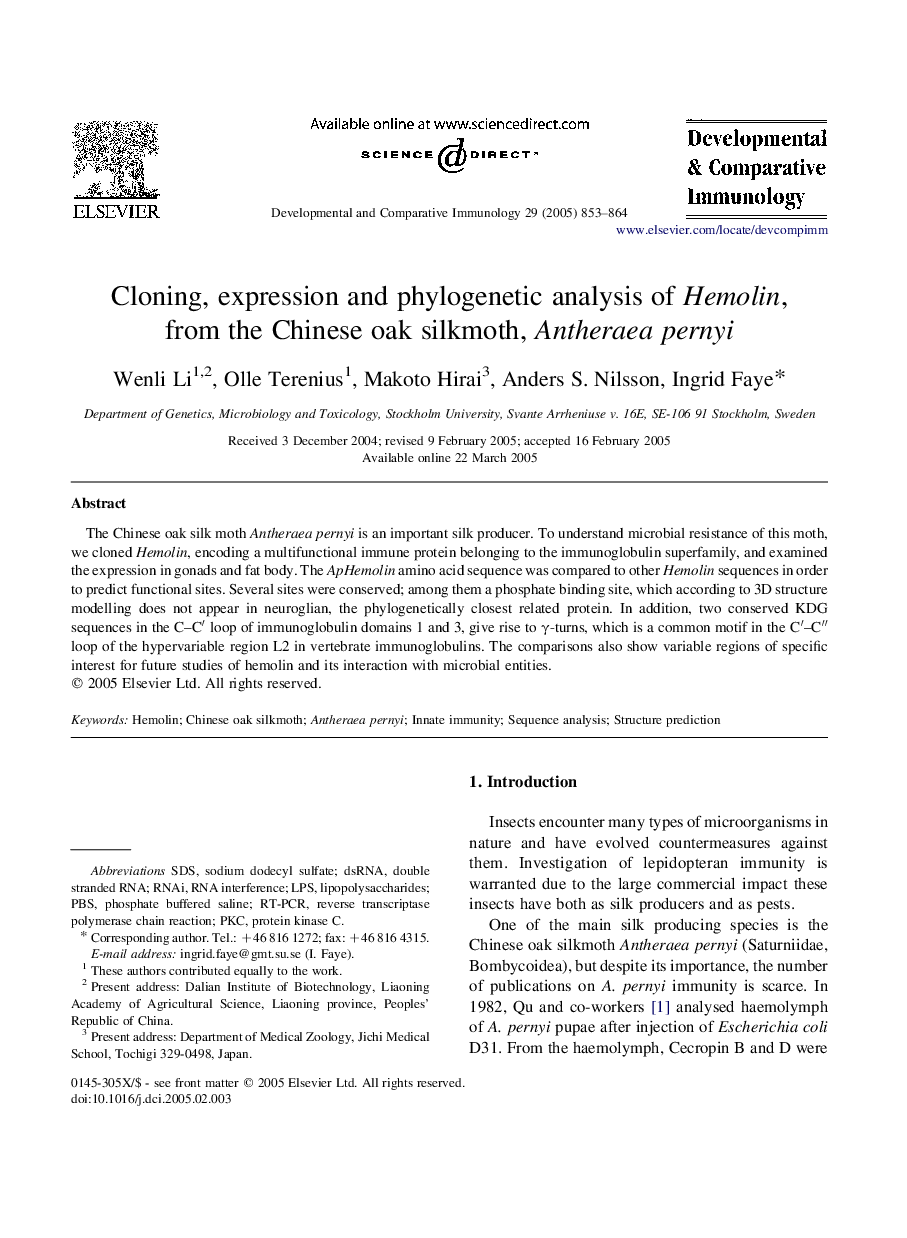| Article ID | Journal | Published Year | Pages | File Type |
|---|---|---|---|---|
| 8978208 | Developmental & Comparative Immunology | 2005 | 12 Pages |
Abstract
The Chinese oak silk moth Antheraea pernyi is an important silk producer. To understand microbial resistance of this moth, we cloned Hemolin, encoding a multifunctional immune protein belonging to the immunoglobulin superfamily, and examined the expression in gonads and fat body. The ApHemolin amino acid sequence was compared to other Hemolin sequences in order to predict functional sites. Several sites were conserved; among them a phosphate binding site, which according to 3D structure modelling does not appear in neuroglian, the phylogenetically closest related protein. In addition, two conserved KDG sequences in the C-Câ² loop of immunoglobulin domains 1 and 3, give rise to γ-turns, which is a common motif in the Câ²-Câ³ loop of the hypervariable region L2 in vertebrate immunoglobulins. The comparisons also show variable regions of specific interest for future studies of hemolin and its interaction with microbial entities.
Keywords
Related Topics
Life Sciences
Biochemistry, Genetics and Molecular Biology
Developmental Biology
Authors
Wenli Li, Olle Terenius, Makoto Hirai, Anders S. Nilsson, Ingrid Faye,
